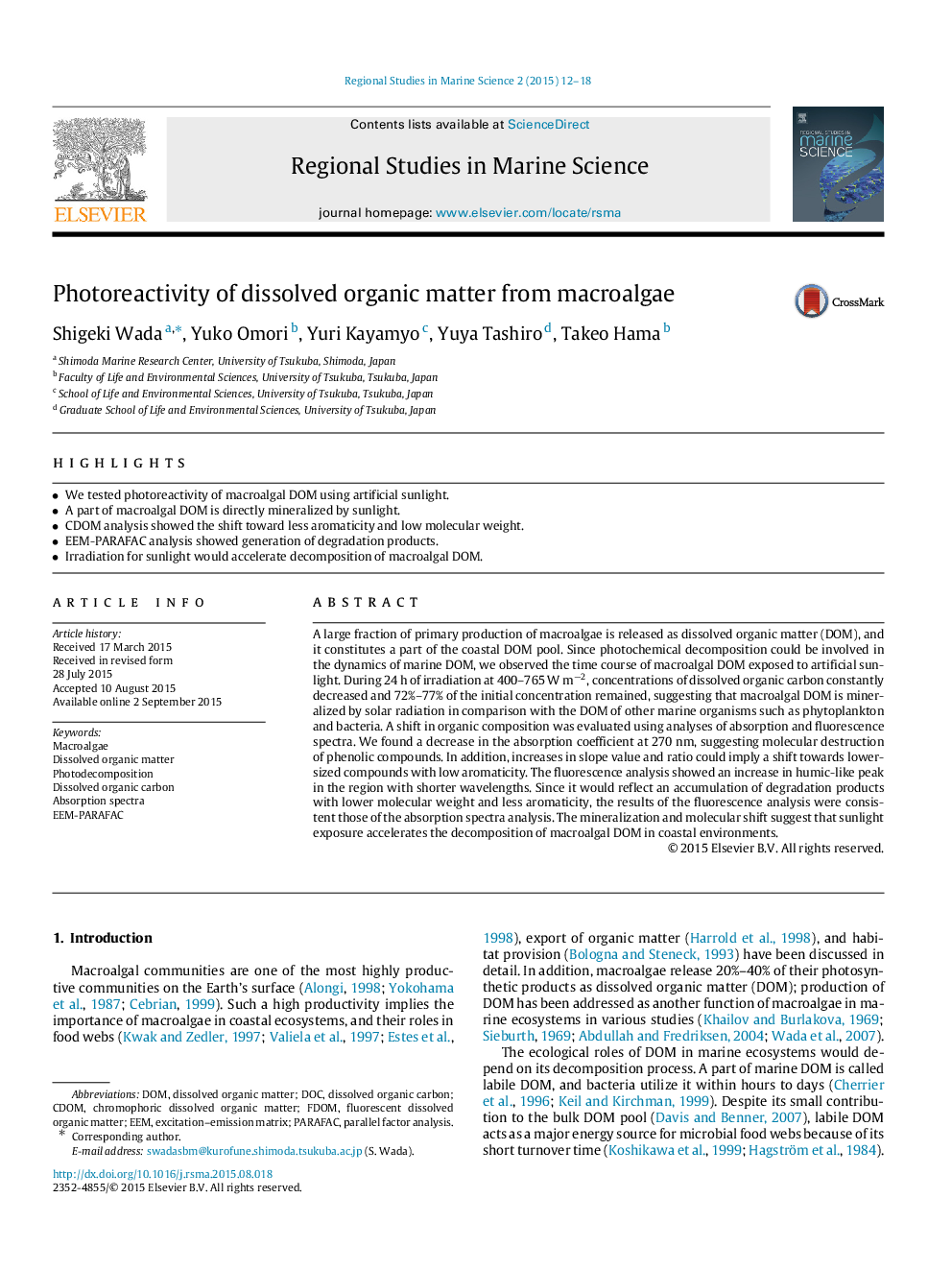| Article ID | Journal | Published Year | Pages | File Type |
|---|---|---|---|---|
| 4478185 | Regional Studies in Marine Science | 2015 | 7 Pages |
•We tested photoreactivity of macroalgal DOM using artificial sunlight.•A part of macroalgal DOM is directly mineralized by sunlight.•CDOM analysis showed the shift toward less aromaticity and low molecular weight.•EEM-PARAFAC analysis showed generation of degradation products.•Irradiation for sunlight would accelerate decomposition of macroalgal DOM.
A large fraction of primary production of macroalgae is released as dissolved organic matter (DOM), and it constitutes a part of the coastal DOM pool. Since photochemical decomposition could be involved in the dynamics of marine DOM, we observed the time course of macroalgal DOM exposed to artificial sunlight. During 24 h of irradiation at 400–765 W m−2−2, concentrations of dissolved organic carbon constantly decreased and 72%–77% of the initial concentration remained, suggesting that macroalgal DOM is mineralized by solar radiation in comparison with the DOM of other marine organisms such as phytoplankton and bacteria. A shift in organic composition was evaluated using analyses of absorption and fluorescence spectra. We found a decrease in the absorption coefficient at 270 nm, suggesting molecular destruction of phenolic compounds. In addition, increases in slope value and ratio could imply a shift towards lower-sized compounds with low aromaticity. The fluorescence analysis showed an increase in humic-like peak in the region with shorter wavelengths. Since it would reflect an accumulation of degradation products with lower molecular weight and less aromaticity, the results of the fluorescence analysis were consistent those of the absorption spectra analysis. The mineralization and molecular shift suggest that sunlight exposure accelerates the decomposition of macroalgal DOM in coastal environments.
